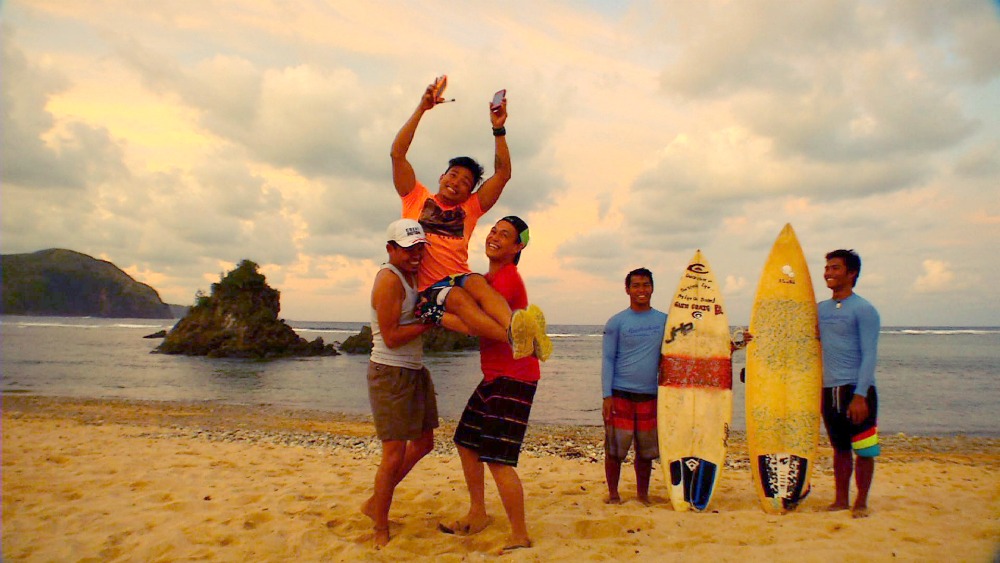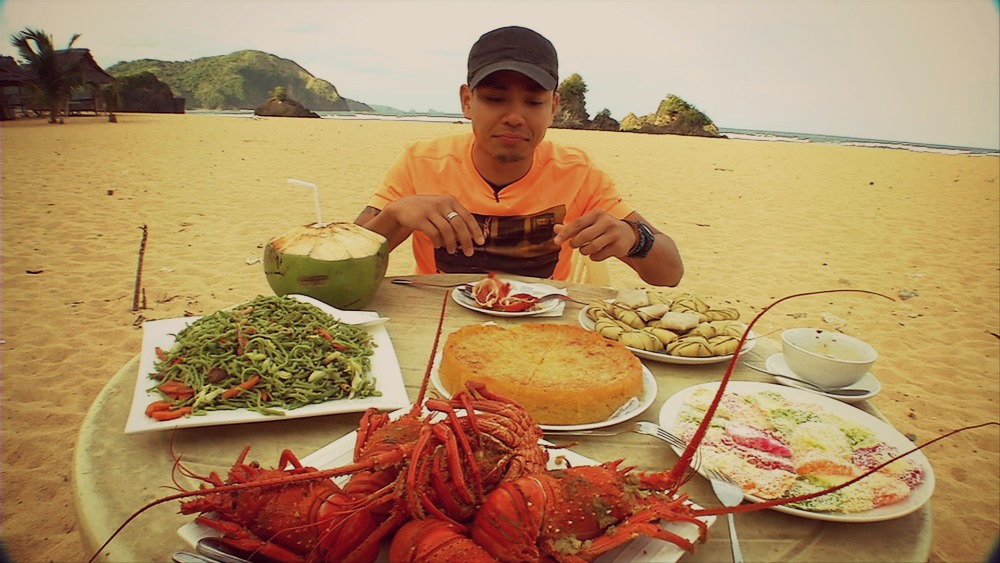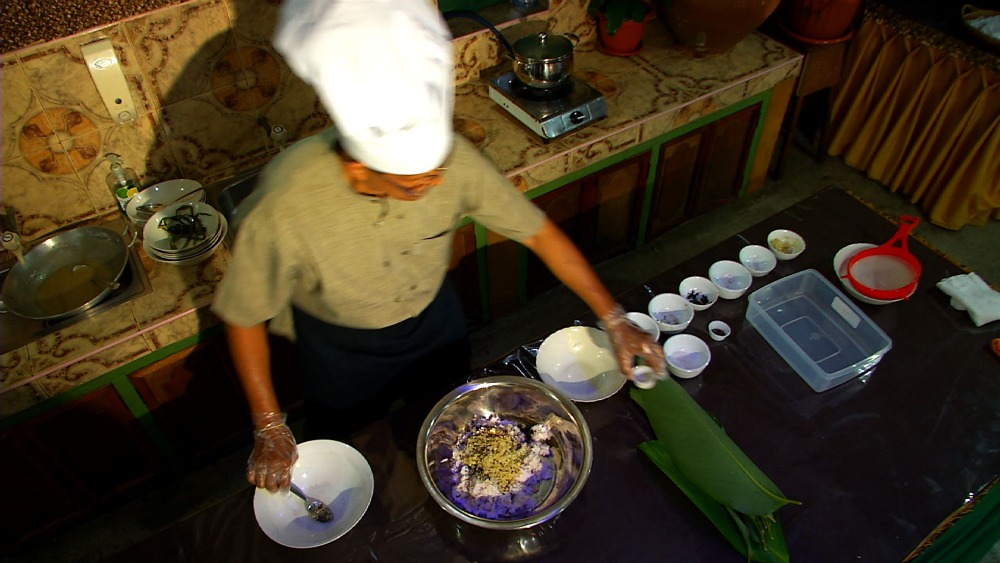Filtered By: Newstv
NewsTV
Summertime in Virac, Catanduanes: A 'Biyahe ni Drew' itinerary

Catanduanes is 366.29 kilometers from Manila – far from the busy city life and closer to island paradise. With Catanduanes’ mountainous terrain and pristine beaches, it’s no wonder that it was one of the shooting locations for US-based reality TV show “Survivor: Caramoan” in 2012.
Here’s the itinerary that Drew Arellano and the crew used.
Quick facts
- Catanduanes gets its name from “tandu," a native beetle, and a native tree called “samdong”. The province was once known as “katanduan” or “kasamdongan”, meaning a place where these objects are found.
- It is located in the southern area of the Bicol region, and is the twelfth biggest island in the Philippines.
- Catanduanes has been nicknamed “the land of the howling winds.” This is because it faces the Pacific Ocean and is in the path of many storms during the rainy season of July to March. But during the summer months of April to June, it’s picture-perfect!

How to get there
By air. Flying to Virac, Catanduanes from Manila takes just one hour. The “Biyahe ni Drew” team booked tickets with Cebu Pacific Air, which has direct flights to Virac every Monday, Wednesday and Friday
.
If you need to fly on another day, Cebu Pacific has flights to Legazpi, Albay; from here, you’ll need to drive for one hour and take a three-hour ferry to Virac. Follow Cebu Pacific on Facebook and Twitter for the latest seat sales.
Getting around. Once in Catanduanes, jeepney rides cost P25 per person. This is more expensive than fares in Manila because gas is harder to come by.
What to do
Explore Luyang Cave
Luyang Cave Park, Lictin, San Andres, Catanduanes
You don’t need to be a pro to enjoy this. There are stairs leading into the cave, which make it a viable option even for inexperienced travelers?.

Take it easy at Puraran Beach
Baras, Catanduanes
Thanks for the waves, Pacific Ocean! Visit the so-called “surfing mecca” of Catanduanes in the morning for high tide and the best waves. In the afternoon, you can sit back and order food from the restaurants nearby. They all serve steamed lobster, how about that? Drew and the crew also found rainbow-colored pichi-pichi, cassava cake, binamban (a pentagon-shaped dessert made with coconut and sticky rice), fresh coconuts, and pancit canton made with green, vegetable-based noodles.

Visit Caramoan
The Caramoan Group of Islands was the primary shooting location for “Survivor: Caramoan” in 2012. Hire a bangka for P3,500, good for five to six people, to take you to these lovely islets. Lahos Island is popular among sunbathers and features a wide sandbar. Best of all, there’s no entrance fee!

If you want to visit the island that the “Survivor” castaways lived on, that’s Matukad Island! “Sino nga ba ang hindi ma-i-in love sa islang ito?” says Drew. Apart from the usual island delights, Matukad offers a challenge for the more athletic traveler: with a guide, climb a cliff and get to a secret lagoon. In the clear waters, the “Biyahe ni Drew” crew spotted a bangus that was a meter long! Our guide told us a creepy local tale: a fisherman once caught one such giant bangus from the secret lagoon but died after eating it.
What to see
Maribina Falls
Bato, Catanduanes
Maribina is just a five-minute walk away from the main road, so there is absolutely no excuse for you to miss this. You can go swimming in its cool pool lined with giant boulders for just P10 (kids) and P20 (adults). “Ang twenty pesos mo dito, sulit na sulit na,” says Drew. For an added P300, you can have a little cottage to store your things and go picnicking.
Bato Church
Bato, Catanduanes
The Bato Church shows the impact that the Spanish colonial era had on the province. The stone church, with its stained glass windows, is used in Roman Catholic masses to this day.
Our Lady of Sorrows shrine
Brgy. Batong, Paluway, San Andres, Catanduanes
This chapel houses an image of the Virgin Mary believed to be miraculous.
Where and what to eat
Fishing Village
Brgy. Cabugao, Bato, Catanduanes
Fishing is the main source of livelihood in Catanduanes. At 1:00 in the afternoon onwards, locals begin selling fresh catch at roadside stalls. The “Biyahe ni Drew” crew spotted all kinds of fish, including a dorado or mahi-mahi, which was as long as both of Drew’s arms from end to end, and the flying fish that Drew tried in Batanes. It’s cheaper here than at the public market since you’re buying directly from the fishermen. Once you’ve chosen your fish, you can ask your hotel to cook them for you for an added fee.
The Fin Bar & Grill
Virac, Catanduanes
“They have different kinds of pulutan na hindi ko pa natitikman ever,” says Drew. We’re talking about fried lobster, inihaw na dorado, a deep-sea fish called sulahan, and sinalpungan. Sinalpungan resembles beef tapa but is actually cow innards that have been deep-fried to a savory, sinful crisp. “Akalain mo, ang sarap nga,” says Drew, who normally doesn’t like exotic food. “Kinakamay ba ito? Deep-fried...definitely.”
Taste Buds
Virac, Catanduanes
Exotic food? No problem! Here, you can try fried frogs, fried eels, and eels in coconut milk.

Delicacies: Suman sa latik and Tinumok
Suman sa latik is a specialty of Catanduanes. Grab some of this sticky, sweet treat for yourself or buy a box for your loved ones back home. If savory snacks are more up your alley, try tinumok, a cake-like meal which is made with coconut milk and shrimps. It’s similar to laing, but has crunchy edges.
Where to stay
Rakdell Inn
Virac, Catanduanes
Rooms here are laid out like a house: Each “room” actually has a living room, a dining room, a bedroom, and a balcony. “This is weird. Nasa bahay ba ako? Tao po!” joked Drew. “Nay, patimpla nga ng kape!”
While Rakdell isn’t a four- or five-star hotel (“Actually, di ko nga alam kung three-star ito,” says Drew), you can count on it for simple, clean accommodations that are light on the budget.
Twin Rock Beach Resort
Virac, Catanduanes
If you want beachside accommodations with a view, this is where to go. The non-airconditioned rooms are affordable, ranging from P300 to P1,000 a night. If you want air-conditioned accommodations, that’ll cost P1,000 to P4,000 a night, inclusive of breakfast. The rooms’ decor is plain, but what you’re really paying for is the beach. One to sawa ang saya! - Cristina Tantengco/PF, GMA News
More Videos
Most Popular




